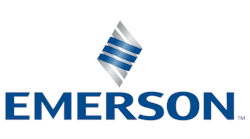Last month [in July Flow Control magazine] I described the operation of a horizontal extractor whose outlet flow of “clean” water at one end of the extractor was controlled using the interface level on the opposite end of the extractor. This did not seem logical because there was a significant distance between the interface level measurement and the control valve that would cause a relatively long time delay.
Changing the clean water outlet flow on the interface level would easily take tens of minutes to affect the interface level at the opposite end of the extractor. Even though the remainder of the unit had electronic controls operated from a central control room, this extractor was controlled with a local pneumatic displacer level transmitter. Therefore, operators did not regularly monitor the extractor level, nor did they really care about the extractor level unless an excessive amount of (valuable) product was found in the daily “clean” water analysis. Needless to say, better extractor control was part of the justification for upgrading the instrumentation in this unit.
There was no question that the new instrumentation would be monitored and controlled in the distributed control system. Replacing the existing pneumatic interface level controller with its electronic/distributed control system counterpart is one approach to upgrade control of the extractor. However, the time delay between “clean” water adjustments and interface level was excessive, so it was decided to control the interface level directly above the clean water outlet to ensure a suitable separation zone and reduce the possibility of product leaving with the clean water.
Once the control strategy was decided, the instrument used to measure the interface level directly above the clean water outlet had to be developed. The extractor was designed and installed in the U.K., and it was not known if its manufacturer was still in existence. Mechanical drawings that came with the extractor were found in the mechanical maintenance files. The drawings and physical inspection revealed that the extractor did not have any nozzles in the separation zone near the clean water outlet (except the nozzles for the actual inlet and outlet flows).
How would you tackle this problem? Which interface level measurement technology would you use? Send your suggestion/comments/etc. to [email protected]. More next month [in September Flow Control magazine].
David W. Spitzer is a regular contributor to Flow Control with more than 35 years of experience in specifying, building, installing, startup, troubleshooting, and teaching process control instrumentation. Mr. Spitzer has written over 10 books and 150 technical articles about instrumentation and process control, including the popular “Consumer Guide” series that compares flowmeters by supplier. Mr. Spitzer is a principal in Spitzer and Boyes LLC, offering engineering, expert witness, development, marketing, and distribution consulting for manufacturing and automation companies. He can be reached at 845 623-1830.



